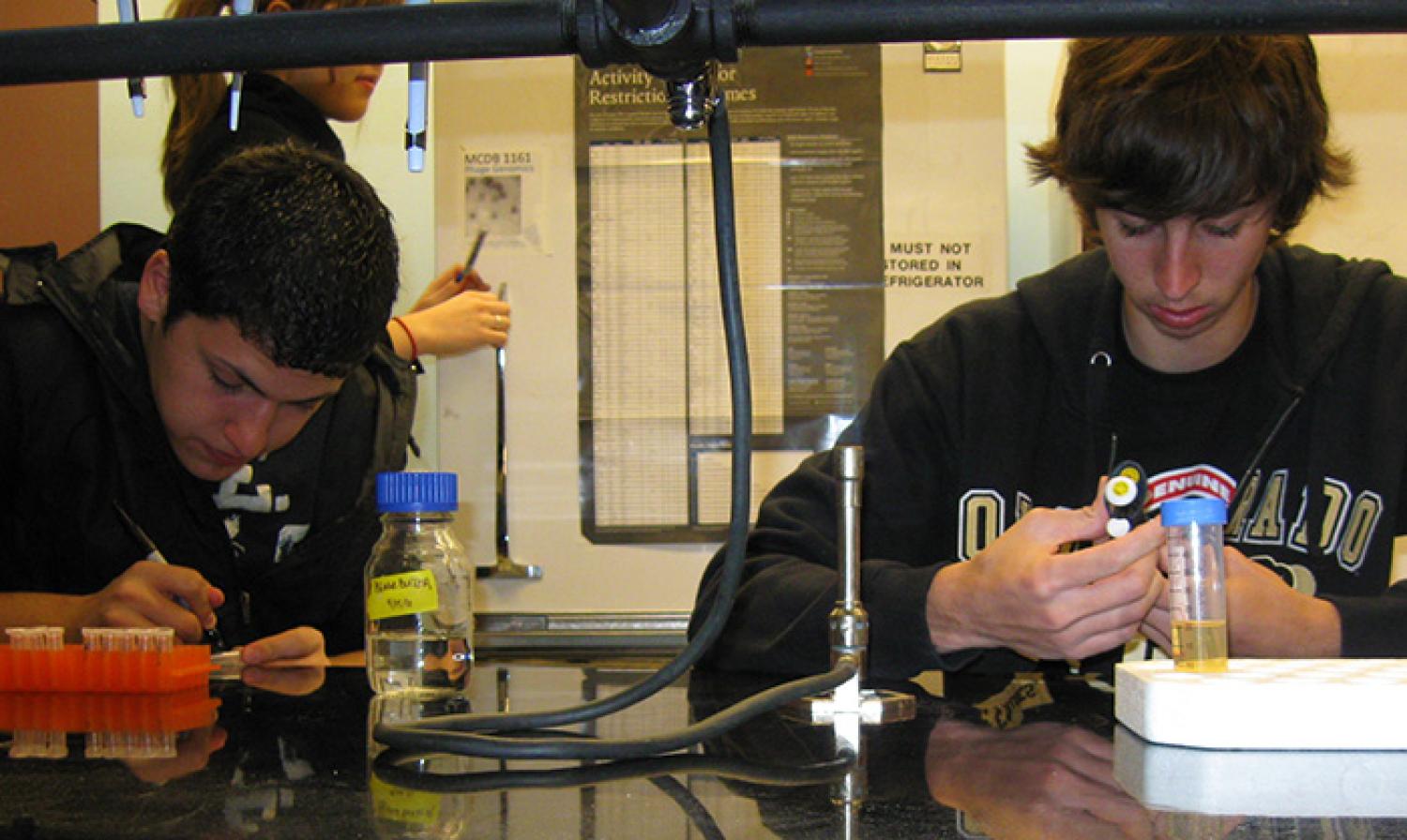Freshman Phage Hunters Part of Huge Study on Tiny Creatures

Most scientific papers list a handful of co-authors, but in a monumental example of scientific collaboration and real-world undergraduate research education, a study appearing this week in the online journal eLIFE includes more than 2500 undergraduate authors from 81 colleges and universities around the world. Among the young researchers are 59 CU-Boulder freshmen.
The study describes the evolution of a tiny organism‐a bacteriophage, or “phage,” for short. So minuscule are phages (viruses that infect bacteria) that a perennial debate in biology classes concerns whether they’re worthy of being considered living things at all. They can’t do much of anything on their own, and have to commandeer hapless bacteria to multiply, which they do to countless numbers.
All that reproduction, it turns out, spawns rapid and vast evolution. Bacteriophages have only a smattering of genes, which are subject to the same forces of genetic change that drive evolution in more legitimate organisms. The eLIFE study compared the complete DNA sequences of 627 different mycobacteriophage-viruses that infect one type of bacterium, called mycobacteria-that were isolated, analyzed, and annotated by undergraduates around the world. By comparing the sequences and arrangement of the bacteriophage genes, the researchers traced the evolutionary history of the viruses.
The collaborative effort, begun in 2008 by Graham Hatfull, a professor at the University of Pittsburgh, and supported by the Howard Hughes Medical Institute, is called the Science Education Alliance-Phage Hunters Advancing Genomics and Evolutionary Science program (SEA-PHAGES).
CU’s Department or Molecular, Cellular and Developmental Biology has participated the SEA-PHAGES program since its second year, says Dr. Christy Fillman, who instructs MCDB 1161/2161 (From Dirt to DNA: Phage Genomics Lab I and II) along with Professor Nancy Guild. Fillman and Guild are co-authors on the paper. “Most undergraduates come in not knowing what real research is like, but our students are making a real contribution to science, not just doing a classroom experiment,” Fillman said.
The CU freshmen have so far isolated 118 different mycobacteriophages, photographed many of them under an electron microscope, and determined the complete DNA sequences for seven of them. Five of the viruses, which the students named JHC117, Perseus, Manad, Newman, and Lilith, are included in the eLIFE study.

